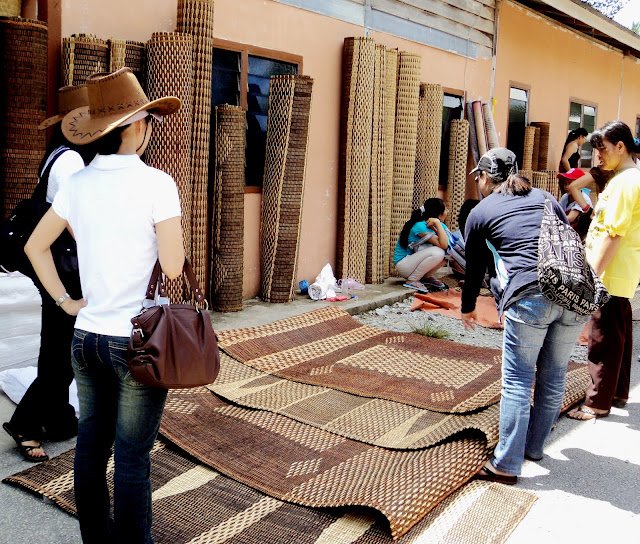 |
| The Council Negeri meeting in Kuching, Sarawak on Malaysia Day 1963. |
 |
| Malcolm MacDonald with Temenggong Koh and Penghulu (later Tun ) Jugah |
# SUPP condemned the Malaysia proposal as unacceptable to the peoples of Sarawak.
# On 4th September, the newly elected Council Negeri, sitting for the first time, passed a resolution welcoming the establishment of the Federation of Malaysia by 31 votes to 5, all the five 'no' votes came from SUPP.
# The Malaysia Agreement cannot be changed through constitution because this agreement was signed among sovereignties. The Malaysia Agreement was signed on 9th July,1963 by Britain, Malaya, Singapore, Sarawak and Sabah in London.
# The Malaysia Agreement stated that Malaysia would be proclaimed on 31st August 1963. However, due to the turn of events i.e. the Presidents of Indonesia and Philippines wanted if truly the peoples of Sarawak endorse the Malaysia Plan and wanted the 1962 and 1963 Elections to be verified. Thus the UN sent a mission. This delayed the launching of Malaysia till 16 September, 1963.
# Even Malaya was itself only partly independent in that it relied on Britain for its defense.
# Although British officials still remain in administrative capacities in Sarawak and Sabah, they did so at the behest of elected governments.
# One of the reasons that the British government pushed for more self-rule in the last days of colonialism in Sarawak was that they feel unwelcomed by the anti-cessionist movement. Thus this fact points at the role played by the anti-cessionists in bringing about the formation of Malaysia.
# The process of decolonisation saw the leaders of the colonial states of North Borneo (Sabah) and Sarawak to seek ways to achieve independence. The British appointed Malcolm Mac Donald as High Commissioner to the territories implied that British policy was to coordinate and push for the merger development in Malaya, Singapore, and the three Borneo territories.
# The Cobbold Commission can be said to have functioned as an important "cover" to legitimate the British decision to withdraw from Sarawak without having first granted self-government, as promised at the time of Cession.
# It would be more appropriate to presume that the British plan for the disposal of the colonies was in accordance to their grand plan. They suggested, and the Tunku concurred.











